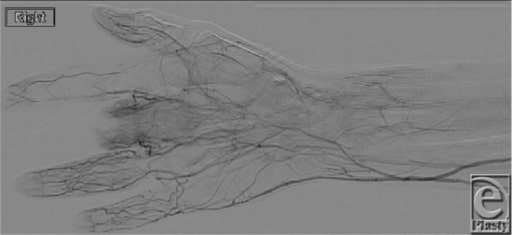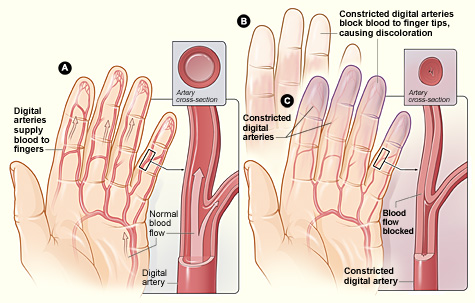Playlist
Show Playlist
Hide Playlist
Buerger's and Raynaud's Disease: Summary
-
Slides 02 VascularMedicine advanced.pdf
-
Reference List Vascular Medicine.pdf
-
Download Lecture Overview
00:00 So in summary, then: • Buerger's disease is arterial obstruction of very small and medium-sized blood vessels, usually in the hands and feet. It can lead to gangrene, or death of tissue, at the tips of the fingers and the toes. And it's probably an autoimmune disease but… that's triggered by tobacco products. 00:23 • Raynaud's phenomenon, on the other hand: There's spontaneous spasm in the blood vessels. 00:29 This causes white discoloration of the fingers, which eventually, fingers turn blue from low levels of oxygen in the blood. And then eventually, when the hand warms, the skin returns to bright red. The classification is either primary Raynaud's—in other words, actually Raynaud's disease—or it's secondary either to an autoimmune disease or to the fact that the person is just very sensitive to cold. • And the treatment is, of course, no smoking, vasodilators, and avoidance or protection from cold.
About the Lecture
The lecture Buerger's and Raynaud's Disease: Summary by Joseph Alpert, MD is from the course Arterial Diseases.
Included Quiz Questions
Which of the following is most likely to exacerbate symptoms in patients with Buerger’s disease or Raynaud’s disease?
- Cold temperatures
- Increased moisture
- Dry weather
- Excess heat
Customer reviews
5,0 of 5 stars
| 5 Stars |
|
1 |
| 4 Stars |
|
0 |
| 3 Stars |
|
0 |
| 2 Stars |
|
0 |
| 1 Star |
|
0 |
I love his lectures , he explains everything thoroughly , answers almost every question that I have in the video .





